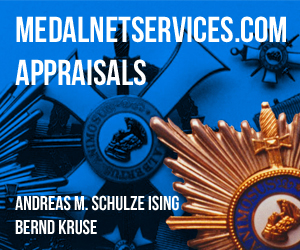Afrikakorps Kriegsmarine Field Tunic
SKU: 23.GOR.02.01.02.01.001
Estimated market value:

Estimated market value:
Attributes
History
During the Second World War, German troops stationed in northern Africa are generally referred to as the Afrikakorps. Technically, this is not entirely correct, since some German units operating in Africa were not actually part of the DAK (Deutsches Afrikakorps), and some units of it were, in fact, Italian ones. However, for the purpose of collecting so-called “tropical” uniforms and insignia, collectors have simplified the meaning of the term.
The first German troops were sent to northern Africa in February of 1941, to support their Italian allies against the British. The climate of the African continent made it necessary to wear specialised uniforms and gear that not only supported the soldiers in serving in a hot and arid environment, but also helped them in blending in with the landscape, which, in general, presented itself as brown, olive, khaki, or sand/tan in colour. Worn over long periods of time under the blistering desert sun, some uniforms were eventually bleached to white or off-white. Uniforms and insignia in these colours are often referred to as “tropical”, and it is worth noting that they weren’t just worn by members of units stationed in Africa, but in the entire Mediterranean theatre of war, including southern France, Italy, the Balkans, and Greece, as well as in southern Russia during the summer months. Tropical uniforms were worn by members of all three branches of the Wehrmacht: the Heer (army), the Kriegsmarine (navy), and the Luftwaffe (air force). Members of the Waffen-SS stationed in southerly regions also wore tropical-style uniforms, and even though they technically have no connection to the DAK, all tropical uniforms and insignia of all branches of the German military are listed here.
The Kriegsmarine had three different tropical dresses: the white dress, the pre-war brown dress (which was very rarely worn), and the wartime brown/khaki dress, which was introduced in late 1941. The pre-war brown dress is identical to the white dress, but made of brown drill fabric.
The Field Tunic (or Field Blouse) was worn by Kriegsmarine personnel of all ranks who served in tropical locales.
This blouse is composed of several main elements, including the panels, the buttons, the collar, the pockets, the lining, the belt hooks, the national emblem, and the rank insignia.
These tunics are manufactured using two front, one back, and four sleeve panels composed of brown-coloured tropical fabric.
The front of the tunic is secured by five anchor buttons located parallel to the seam on the right panel, with corresponding button holes featured on the left panel. During the Second World War, some blouses were produced with six front buttons. There are also three small buttons in the interior of the collar, which were used to attach the collar lining. The buttons were painted brown, except for Officers, who used gold-coloured buttons. They feature the image of a fouled anchor on the obverse.
The collars are in the “flat fall-down” style, and they are generally composed of basic cloth. Other elements that comprise the collar include the internal stiffening linen and the moleskin fabric on the collar underside. The collars worn by Non-Commissioned Officers may feature a border of light/cornflower blue ribbon.
These blouses have a total of six pockets, two at breast level, two at hip level, and two interior pockets cut into the breast lining. The pockets at breast level are “patch” pockets, and they were sewn onto the front panels with a centre pleat, scalloped flaps, and a button. The pockets at the hip level are “slash” pockets that were cut directly into the lining of the blouse, and they also have scalloped flaps and a button. The top interior pocket is located at breast level within the interior lining of the left front panel, while the lower interior pocket is located at the lower corner of the right panel.
Only the shoulders of the tropical blouse are lined with either brown tropical cloth lining, or white lining fabric. The topical blouses are also unique in their use of 5-9 eyelets at the armpit for ventilation.
The blouses feature two belt hooks which are located at the intersection of the lateral and waist seams. These hooks were attached to the interior of the jacket via a cloth patch and pass through one of three available eyelets. The belts were worn between the bottom two buttons and secured by the belt hooks.
The national emblem is featured on the right breast of the blouse above the right patch pocket, and it is embroidered on a cloth backing that matches the colour of the blouse. The emblem is generally machine-embroidered or machine-woven in yellow thread, but for Officers, the national emblem is generally hand-embroidered. There are instance of Officers and Senior Non-Commissioned Officers wearing a metal national emblem on the field blouse.
The Afrikakorps Kriegsmarine tunic was often worn with regular Kriegsmarine shoulder boards, since tropical Kriegsmarine shoulder boards were rarely available.
The field blouses underwent several design changes throughout the Second World War, including the degradation of the cloth quality, the use of six buttons on the front panel, the exclusion of the centre pleats from the breast pockets, and the change of the hip pockets from slash pockets to patch pockets. All these alterations may affect the overall price of the field blouse.


Comments
Sign in to comment and reply.


Scroll Top